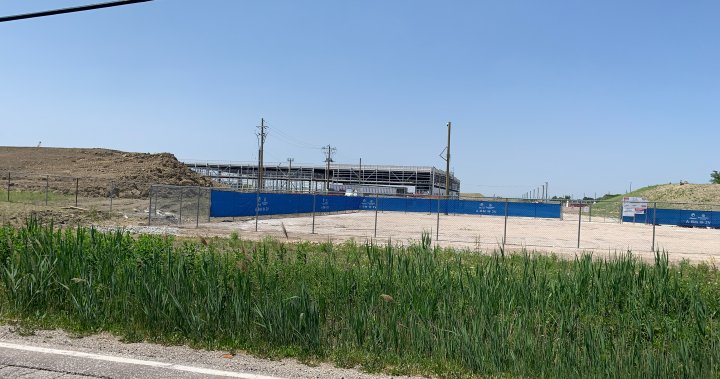
Foreign workers at subsidized EV battery plant a ‘slap in the face’: union
Global News
The head of Canada's Building Trades Unions is calling plans to hire upwards of 900 temporary foreign workers to help build a heavily subsidized EV battery plant an 'insult.'
NextStar Energy Inc. says it expects upwards of 900 foreign workers to help build its heavily subsidized electric vehicle battery plant in Windsor, Ont. The head of Canada’s Building Trades Unions calls the move “a slap in the face” and an “insult to Canadian taxpayers.”
The statement from the union comes as the use of the workers has become a political issue on Parliament Hill, raising questions and concerns over the course of the past week from federal leaders.
The company, jointly owned by Stellantis and South Korea-based LG Corp., says the temporary global staff will be part of the roughly 1,600 technicians its external suppliers will use to assemble, install and test specialized equipment.
“Bringing approximately 900 South Korean workers to handle the installation of this equipment is not only an insult to Canadian taxpayers who funded this project with the understanding that jobs were going to Canadians, but it is a slap in the face to our workers and contractors, including those in Windsor, who are the most highly-skilled tradespeople in the world,” said Sean Strickland, executive director of Canada’s Building Trades Unions.
The estimate of 900 temporary foreign workers comes a week after Windsor police posted on social media that upwards of 1,600 South Koreans would be coming to help build the plant, raising concerns from labour leaders and politicians about how many local jobs would be created by the plant.
NextStar says that it remains committed to creating 2,500 full-time jobs for Canadians to run the completed plant, and that the construction company it has contracted will employ 1,600 Canadian tradespeople directly and through subcontractors.
On Friday, Innovation Minister Francois-Phillippe Champagne stressed that Stellantis is putting up $3.4 billion to build the plant, and much for the government subsidies are conditional on hitting production targets. He says that the federal and Ontario government contributions to construction are $500 million each.
“I spoke to the unions, I spoke to the building trades. You know, the experts have been clear all that you need a technology transfer. You know, because battery manufacturing was not part of the industry we had either in Canada and the United States. So we need a technology transfer,” Champagne said.













